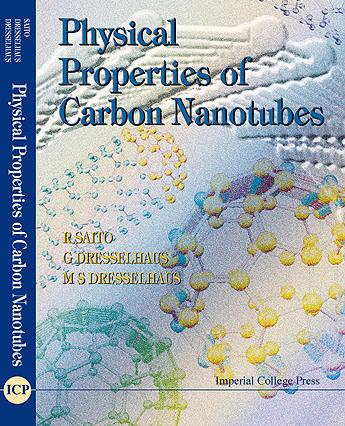 "Physical Properties of Carbon Nanotubes"
"Physical Properties of Carbon Nanotubes"  "Physical Properties of Carbon Nanotubes"
"Physical Properties of Carbon Nanotubes" This page is for collecting the questions from the readers and the answers from the authors. Not all questions are always listed. I hope that it is nice for everybody.
Q1: I am experiencing difficulty in deriving formula (2.27) of section 2.3.1 in the tight binding calculation of graphene and was wondering if you can be ever so helpful in clarifying how it was obtained. I have solved the secular equation det(H-ES)=0 to arrive at:
E(k) = ((t*s*(|f(k)|^2)-e2p)+/-(|f(k)|*(t-s*e2p)))/(1-(s^2)*(|f(k)|^2))
I would be very grateful if you can tell me how to proceed.
A1: You solved E^2 + A E + B = 0, which is not a smart way.
You can factorize E^2 - X^2 = (E + X)(E - X) before solving the above equation.
Q2: On p.175 you find 66 distinct phonon branches (12 A and 54 E modes) for a (10,10) NT. (I have checked this by repeating your calculation) However, on p.185 a symmetry consideration give 24 A and 48 E modes giving a total of 72 phonon branches. Is there a problem with the symmetry arguments?
A2: Thank you for your considering the story deeply. Both results are correct. But we need to explain more. If there is a higher symmetry, we can expect more degeneracy of eigenstates. In fact, several group discussed the space group of single wall nanotube which includes the point group of the unit cell. This is the reason that the numerical results have more E modes than the consideration of the point group theory. If you are interested in this subject, please give me the information that the space group gives the degeneracy of eigenstates of (10,10) nanotube. Thank you.